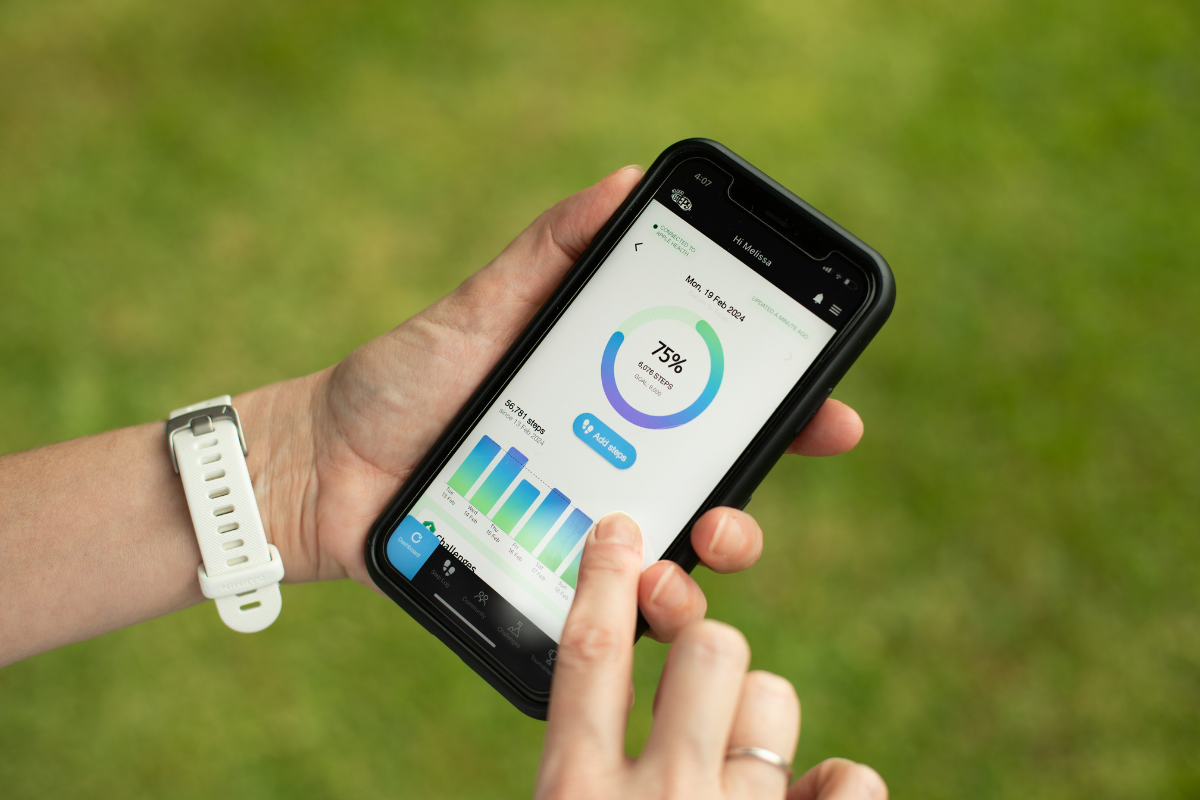The step goal of 10,000 is the recommended daily step target for healthy adults, but it might not be right for you! Depending on your current activity level, we recommend that you monitor your own activity to set your own specific goal. Setting your own personal step goal is a great way to encourage more active choices throughout the day. Tracking your progress on your Dashboard can help you to stay motivated to move move in order to increase your activity level.

Choosing an Activity Tracker
Most wrist worn physical activity trackers convert the number of steps with algorithms into measures, such as the distance covered and the number of calories burned. Associated mobile applications provide insight into individual physical activity behaviour over a certain period of time. The 10,000 Steps website has Fitbit, Garmin and Google Fit integration to allow steps to be automatically synced.
A pedometer is a portable, user friendly device that counts steps by detecting motion of the hips. A pedometer should be clipped securely to a belt, pants or skirt just above the hip in line with the knee. The pedometer must remain vertical, as it counts steps using a pendulum and spring mechanism, which moves up and down as you walk. Pedometers are a great low cost option for large workplaces and those who do not have access to phones and activity trackers.
Why 10,000 Steps?
The goal of 10,000 steps is the recommended daily step target for healthy adults to achieve health benefits. With continual advances in technology and our lives becoming more sedentary it now takes a concerted effort to make active choices. We can all make the effort to move more in small ways across the day, by parking further from the entrance to shops, taking stairs instead of escalators, standing while at work and walking to socialise with friends and family.
Activity trackers provide data which enables you to become aware of your physical activity levels, work towards a goal and monitor progress. Studies using the 10,000 steps per day goal have shown weight loss, improved glucose tolerance, and reduced blood pressure from increased physical activity toward achieving this goal. The following pedometer indices have been developed to provide a guideline on steps and activity levels:
- Sedentary is less than 5,000 steps per day
- Low active is 5,000 to 7,499 steps per day
- Somewhat active is 7,500 to 9,999 steps per day
- Active is more than 10,000 steps per day
- Highly active is more than 12,500
Although the program promotes the goal of reaching 10,000 steps each day for healthy adults, this goal is not universally appropriate across all ages and physical function. There are some groups where the goal of 10,000 steps may not be accurate, such as the elderly and children. Your individual step goal should be based on current activity levels and overall health and fitness goals. For people who normally do fewer than 10,000 steps, increasing daily activity by 1-2,000 steps per day will provide health benefits.
Combining Two Recommendations
For healthy adults, the goal of reaching 10,000 steps each day should be encouraged along with the Australian Physical Activity and Sedentary Behaviour Guidelines. To reach 10,000 steps, active choices should be made throughout the day as many adults struggle to reach 10,000 steps without also doing some form of planned moderate activity.
Thirty minutes of moderate physical activity such as walking, is approximately 3,000 - 4,000 steps. By combining both the goal of 10,000 steps each day and 30 minutes of moderate activity as recommended in the Australian Physical Activity and Sedentary Behaviour Guidelines, we are more likely to reach a physical activity level associated with health benefits. Remember one of the main points from the Guidelines though, doing something is better than none and doing more is better again, fits quite nicely with our slogan every step counts.
Always consult with a doctor or healthcare professional before commencing a physical activity program.

Australia’s Physical Activity & Sedentary Behaviour Guidelines for Young People (13-17 Years)

Australia’s Physical Activity & Sedentary Behaviour Guidelines for Adults (18-64 Years)
